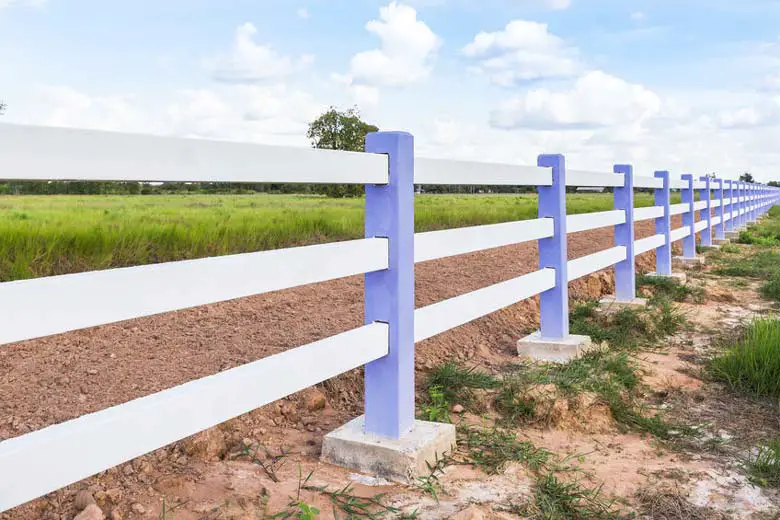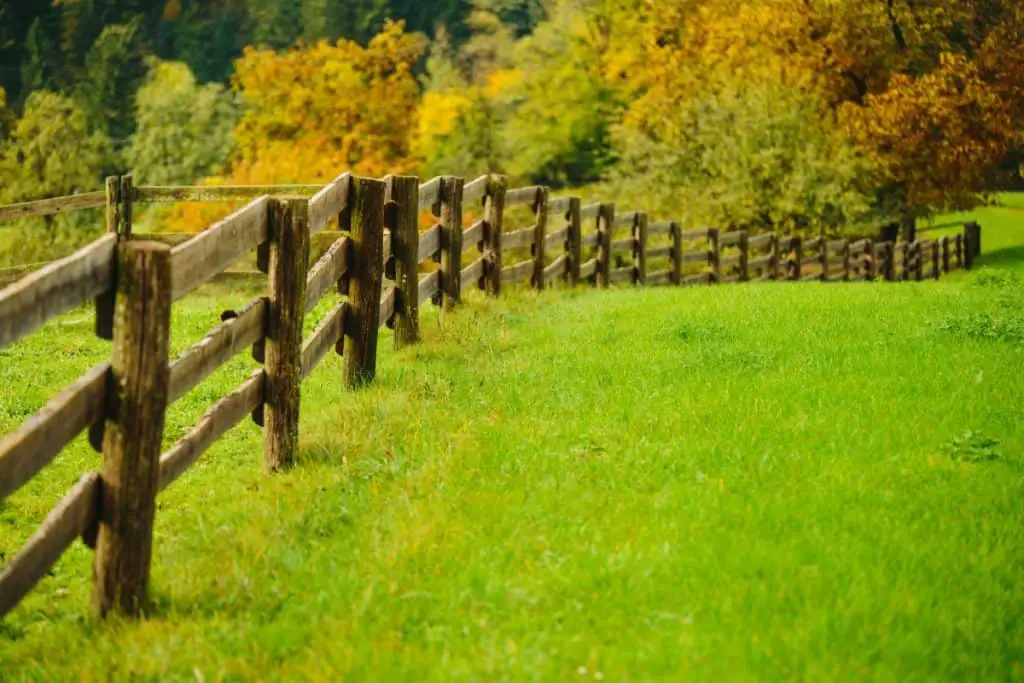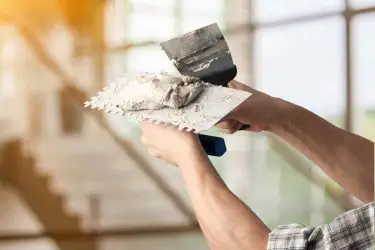Setting fence posts is a project that most homeowners can do themselves without any particular depth of knowledge. However, it’s still important to know when your fence post is set and ready to perform its function.
When using fast-setting concrete to set fence posts, it should set hard after only 20 to 40 minutes. After 4 hours, it should be ready to hold up a heavy weight. When using regular concrete, it generally sets in 24-48 hours. However, for the concrete to be fully cured, it usually takes more than a week.
Of course, there are some edge cases where the concrete could end up taking a little bit longer or shorter to set and to cure.

Table of Contents
The Difference Between Curing and Drying
There are a lot of questions about drying concrete, but to say that the concrete needs to ‘dry’ before it’s finished is actually only partially accurate.
The actual chemical process that gives concrete its strength is known as curing, and it actually needs water for this to happen.
If you simply let your newly poured concrete dry, you’ll end up with a significantly weaker end product than if you help it cure.
Curing is an exothermic reaction between water and cement. Cement, is one of the three dry ingredients for concrete, after sand and aggregate. Cement’s purpose is to act as a binding agent, keeping the disparate elements from falling apart.
If the cement isn’t allowed to interact with the water in the mixture, it won’t be able to bind the sand and the aggregate together as much as it needs to. This can lead to dusting, cracking, and even collapses.
Because of this, it’s important to either seal the surface of the concrete, therefore keeping the water inside it from evaporating, or to keep the surface wet for as long as it’s curing.
Because the concrete you pour around your fenceposts will likely be in contact with soil, you will need to understand how dry the soil in your area is to help it cure properly.
If the soil is usually very dry, you’ll need to make an especially consistent effort to keep the surface wet, as the dirt will absorb water straight out of the concrete as it’s curing.
If the soil is naturally wet, you might not need to worry about it so much since the concrete will be taking water out of the soil. In this case, you can most likely seal the concrete as soon as the surface looks dry and forget about it.
Cold Weather Can Affect the Curing Process
For concrete to cure, it needs to be above a certain temperature. This means that when the ambient temperature drops below a certain number (50 Fahrenheit or 10 Celsius) concrete will actually stop curing.

This is a problem if you want your concrete to get to a certain level of finish before you do something important with it.
Because of this, you should always keep an eye on weather forecasts while planning any concrete project.
If the temperature does drop unexpectedly just after you’ve finished preparing your fenceposts, don’t panic! As long as they don’t suffer from any serious impacts they’ll be fine until it warms up.
As soon as the temperature is back to normal, curing will start right back up again.
Alternatively, you can try to keep your concrete warm during the cold period so that it can cure even when it normally wouldn’t.
This is a lot easier if your fenceposts are closer to your home, and therefore closer to electricity. However, attempting to do this can end up costing a lot of money.
I would recommend waiting for the cold weather to pass.
Read more: Can Concrete Be Poured in the Winter?
Heat Can Make Concrete Dry Too Fast
Concrete does cure much faster in high temperatures, and this causes it to be weaker than if it had a long time to cure. This isn’t a huge problem for fencing, as it doesn’t actually need to be terribly strong.
If concrete cures too quickly for other projects that will be more weight-bearing, its strength can be adversely affected
When it’s hot outside, you do need to make special efforts to make sure that the concrete you’ve poured cures properly.
You can do this by making sure to keep the concrete wet throughout the first week or so after it’s been poured.
This ensures that the concrete will have enough water to complete the curing process in a way that will maximize its strength.
Different Concrete Mixes Have Different Drying Times
The type of concrete used can also affect the amount of time that you need to wait before resuming construction.
The answer given earlier in this article assumes that you are using a quick-drying concrete mix, like the QUIKRETE Fast Setting Concrete Mix (link to Amazon).
If you are not, you may want to wait up to 24 hours before resuming construction on your fence.
This will give the concrete base more time to solidify, preventing damage that could be done to it by applying pressure early on.
However, considering the relatively small amount of concrete needed to fill the pit for the fencepost, there isn’t really any discernable difference between quick curing concrete and other kinds.
When it comes to concrete, spending a little more money now can often save a lot of money and effort in the future.
Read more: Best Concrete Mix for Fence Posts for Ultimate Strength
Fencepost In Concrete Benefits
The point of a fence is for it to stand firm. For it to do this, it needs to have a strong foundation. Concrete is one of the best ways to provide that for each fence post.

Not giving your fenceposts good concrete to set in can easily come back to hurt you financially later on. Putting in that extra effort now will mean that your fence will last much longer than it might otherwise.
Your fence posts will still have the risk of damage from windstorms, animals, or whatever else you may be worried about. As long as you poured a good foundation you’ll know that at least the fence didn’t fall under its own weight.
Of course, if you’ve given your concrete the time it needs to settle and cure, your fence might withstand quite a bit of unpleasantness. It will all depend on how much work you are willing to put in to support it.



